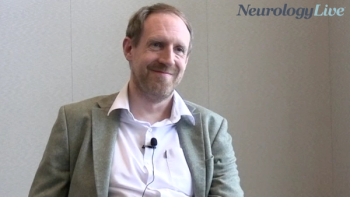
Transforming Glial Cells
A groundbreaking discovery may lead to repair of neurodegenerative diseases such as Alzheimer and Parkinson.
Much research into brain repair processes focuses on neurons and ways to restore their function or prevent their loss. Glial cells, however, are the often neglected cousins that nevertheless make up most of the cells in the brain. A new study suggests that astroglia can actually be recruited to differentiate into neurons.
The groundbreaking discovery may ultimately be used to restore lost neurons in neurodegenerative diseases such as Alzheimer or Parkinson. It could present an alternative to conventional stem cell therapy, harnessing the body’s own cells to treat disease, but potentially without the need for invasive surgery.
Gong Chen, Professor of Biology and the Verne M. Willaman Chair in Life Sciences at Penn State University, led the research effort. Five of Chen’s students, led by Lei Zhang, examined many different combinations of molecules before coming up with the solution that could transform astroglia into neurons.
"We have discovered a cocktail of small molecules that can reprogram human brain astroglial cells into neuron-like cells after eight-to-ten days of chemical treatment," Chen remarked in a press release issued by Penn State University. The researchers describe the contents of the complicated mixture in greater detail in the research report which appeared online in the journal Cell Stem Cell.
The cells lived for up to five months in culture-far longer than the typical lifespan of neurons in a dish. The cells also formed neuronal synapses and circuits that were physiologically functional. The scientists transplanted the newly-formed neurons into mice, where they survived for up to a month.
Using molecular biology techniques, the researchers were able to determine that the astroglial reprogramming occurred due to dampening of glia-specific genes and via the activation of factors that are specific to neurons, called neuroD1 and neurogenin 2.
"These chemically generated neurons are comparable to normal brain neurons in terms of firing electric activity and release of neurotransmitters," Chen pointed out. "Importantly, the human astroglial-converted neurons survived longer than five months in cell culture and longer than one month in the living mouse brain after transplantation."
Chen imagines that ultimately the mixture might be used in a pill form. "The small molecules are not only easy to synthesize and package into drug pills, but also much more convenient for use by patients than other methods now being developed," Chen noted.
He acknowledges, however, that the drug cocktail does require extensive further study in humans. In particular, the components could have general systemic effects on other organs that need to be understood.
Chen and his collaborators have high hopes for the new technology. He remarked "Our dream is that, one day, patients with brain disorders can take drug pills at home to regenerate neurons inside their brains without any brain surgery and without any cell transplantation. Our invention of the small-molecule cocktail helps us to make a huge step closer to that dream."
Hopefully the research can advance beyond animal studies, to the long process of human trials, potentially providing a new avenue for much-needed new treatments of neurological conditions.
Key Points
• Astrocytes can be converted into functional neurons.
• Factors responsible for neuronal differentiation of astrocytes block glia-specific genes and activate neuroD1 and neurogenin 2.
• Astrocyte differentiation into neurons may be used to treat neurological conditions in the future.
Reference: Zhang L, et al.
Newsletter
Keep your finger on the pulse of neurology—subscribe to NeurologyLive for expert interviews, new data, and breakthrough treatment updates.




















